Charles Samuels (1863-1912)
By Tania Schafer, Librarian, State Library of Queensland | 12 July 2019
Cultural Care statement (disclaimer)
Users are advised that this Aboriginal and/or Torres Strait Islander material may contain culturally sensitive imagery and descriptions which may not normally be used in certain public or community contexts. Annotation and terminology which reflects the creator's attitude or that of the era in which the item was created may be considered inappropriate today. This material may also contain images, voices or names of deceased persons.
Charles Samuel was known as one of the greatest Australian sprinters of his time.
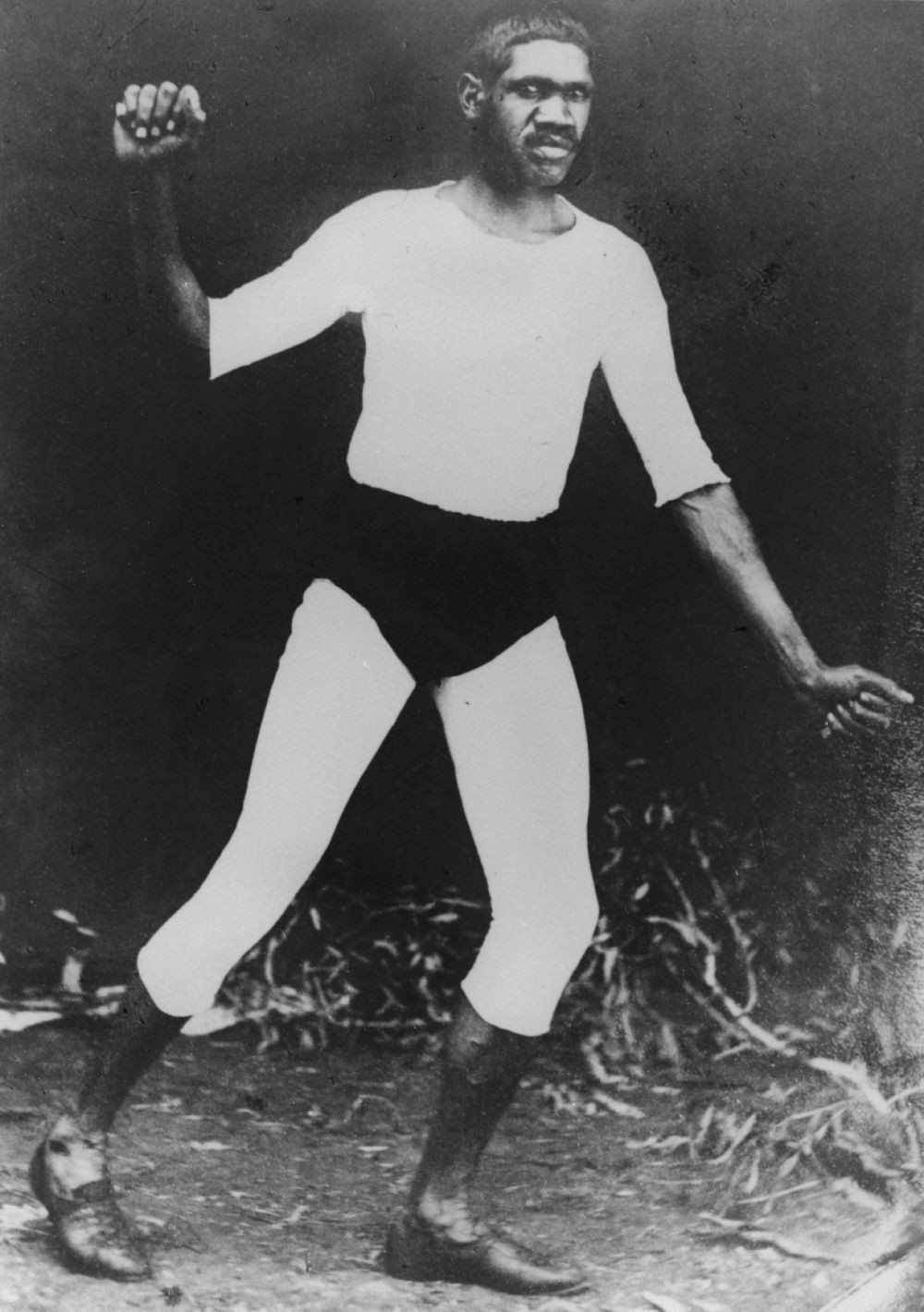
Charlie Samuels, Aboriginal sprinter. John Oxley Library, State Library of Queensland. Neg 151284
Charles Samuels was an Aboriginal athlete born at Jimbour Station, near Dalby, Queensland. He was born Sambo Combo in 1863, with connections to the Kamilaroi people through his mother’s side, but grew up with the local Bunyinni/ Barunggam groups. He started his working career as a stock rider and general hand, but his talent was for running.
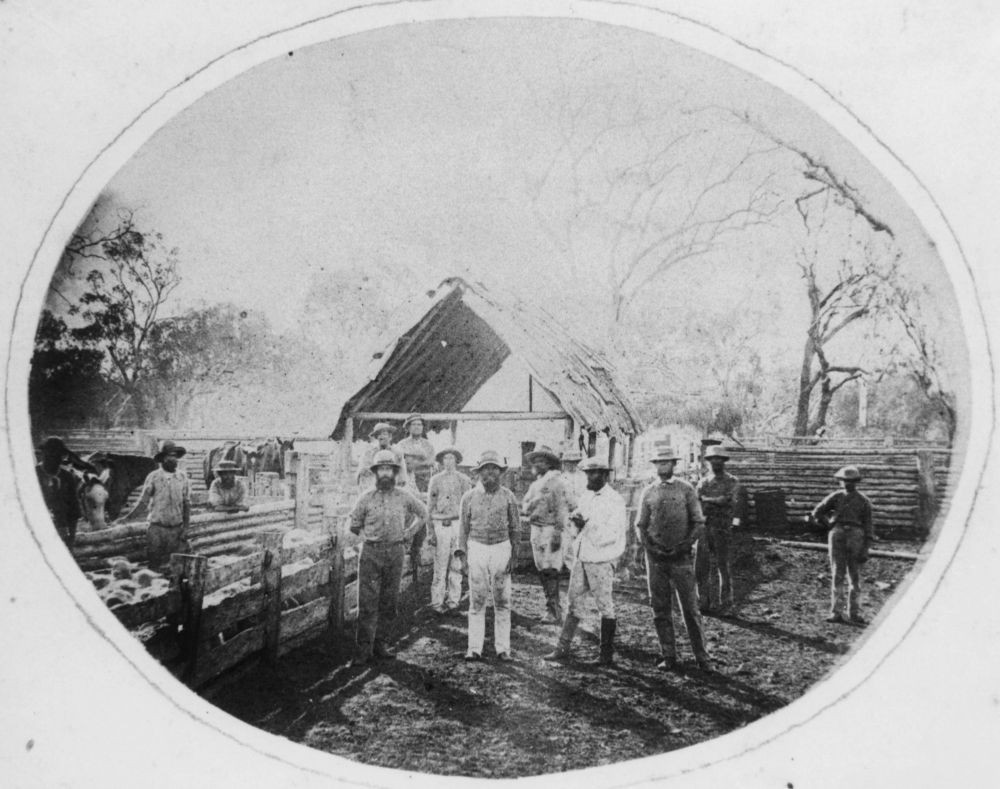
Jimbour Station was one of the largest properties taken up in the 1840s. Photo taken 1869. John Oxley Library, State Library of Queensland. Neg 74272
Sambo Combo replaced his well-known brother George Combo, in the third Botany Handicap in Sydney. George Combo was not only a good sprinter, he was also a fair distance runner, which is why he was requested to attend the 3rd Botany Handicap, however his wife objected and Sambo volunteered to take his brothers place.
Sambo Combo was defeated by the Botany sprinter Tommy Geddes, due to his advanced training procedure. On returning to Jimbour, Billy Robertson, a white station hand, took on Sambo Combo's training.
After Sambo beat Jim McGarrigal in a Dalby race, his manager felt that because of George’s reputation any man named “Combo” would attract a tough handicap. Thus Sambo Combo changed his name to Charles Samuel.
At his second appearance in Sydney, Samuel paralyzed all opposition in the 1886 Botany Handicap, off the 14 yards mark, running the 136 yards in 13 and 1/5 seconds, 4 yards under evens.
Harry Hutchens, who was known as the greatest English sprinter, demanded to race Samuel. In January 1887 both men met for the first time. They ran 150 yards level, and Samuel won by a yard in 14 9-10 seconds. On 4 February 1887 they met again at Carrington over 150 yards on level terms, and Samuel again won by a yard, this time in 15 and one quarter seconds. A month later, 4 March 1887, they again met at Carrington over 150 yards. This time Hutchens won by 2 yards in 14 and a half seconds. Their final meeting was on 13 April 1887, over 130 yards, Hutchens conceding 3 yards. Samuel won in 12 and a half seconds.
Samuel won the series to the extent that "no one," claimed Australian Town and Country, could "dispute Samuel's claim to the title of champion sprinter of the world". The Hutchens camp did not see it that way. Claiming lack of a trainer and his poor condition, Hutchens called the series 'an exhibition', thus denying Samuels that title.
Later Samuel had further celebrated victories against Tom Malone, the Irish champion and the famous Ted Lazarus in 1887. Samuels won 90,000 pounds for his backers against Ted Lazarus but was paid only the prize money, while some records suggest that Samuels was allowed to keep the trophy as his reward.
Charles Samuel's best performance was recorded over 134 yards at '9 yards inside even time' (12.5 seconds) at Botany in 1888, which was dubbed as an Australian record.
In 1894 the Referee wrote: Thus it is that I am about to claim for an aboriginal runner what an overwhelming majority of foot racing critics will concede is his due - the Championship of Australia. It might be a more pleasant reflection to Australians, perhaps, if a white man...could be quoted as champion; but as we are sizing up the sprint runners on the 'all-in' principle, a black aboriginal has to be accorded the laurel crown... Samuel has, in a long course of consistent and brilliant running, established his claim, not only to be the Australian champion, but also to have been one of the best exponents of sprint running the world has ever seen. (Aborigines in Sport, page 18)
Samuel's success as a runner led to heavy handicaps that restricted both his winnings and the financial rewards for his managers, who increasingly left him on his own. Tensions and frustrations emerged, which had Samuel associated with drinking, fighting and some 'stiff' (fixed) racing. Eventually Samuel arrived at La Perouse Aboriginal reserve at Botany. There he was reported in 1894 to have a grievance against the police regarding his rights. In 1896 he was admitted into the Hospital for the Insane, Callan Park, with a 'form of mental disorder (Melancholia)' caused by 'ill health & love affairs'.
In January the next year, wasted, and viewed as a nuisance, Samuel was sent back to Queensland at the Aborigines Protection Board's expense. He returned to Jimbour station but, made unwelcome by the new owners, led a wandering life. He was sometimes seen at local running events.
In 1905 he and his wife Maggie and two daughters were staying in Brisbane where Samuel was reported to be drinking and threatening relatives. On 17 May the family was transferred to Barambah Aboriginal reserve from Brisbane (Aboriginal Crime). Maggie died of consumption on 13 October in Maryborough hospital. Both their children contracted the disease and died in January 1906. Samuel for the most part continued to live and work on the settlement. He went on to have a new family with second wife Lizzie, but an infant child died in 1911.
In 1911 Queensland Governor Sir William McGreggor visited Barambah. We have a photograph in our collection where McGreggor is introduced to a thin man, who I believe is Charles Samuel. It would make sense that a dignitary would be introduced to such a sporting legend.
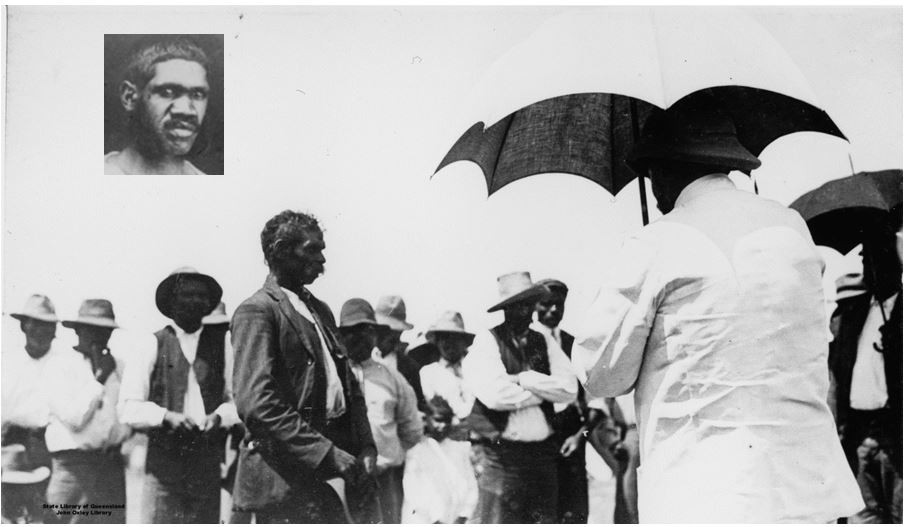
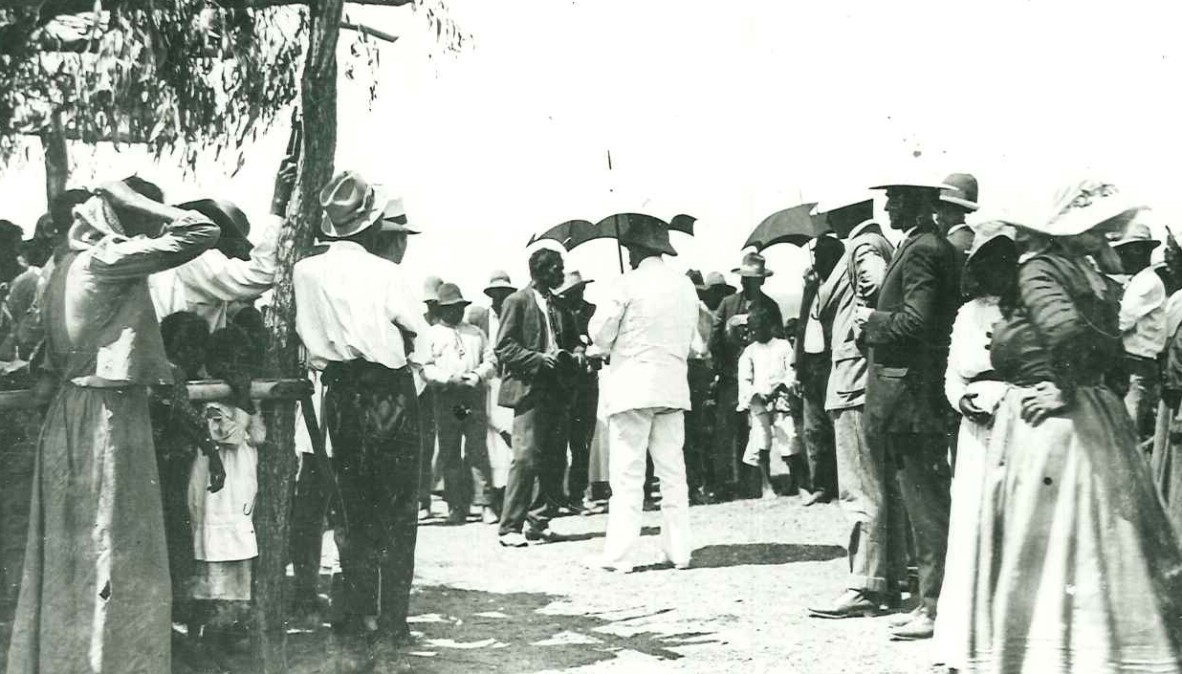
Samuel died of pulmonary tuberculosis on 13 October 1912 at Barambah, now known as Cherbourg Mission. In the Referee, 30 October 1912, p.14 SAMUELS PASSES OUT they mention the life and achievement of Charles Samuel and provided the photograph below. Samuel retained the public's admiration to the very end.
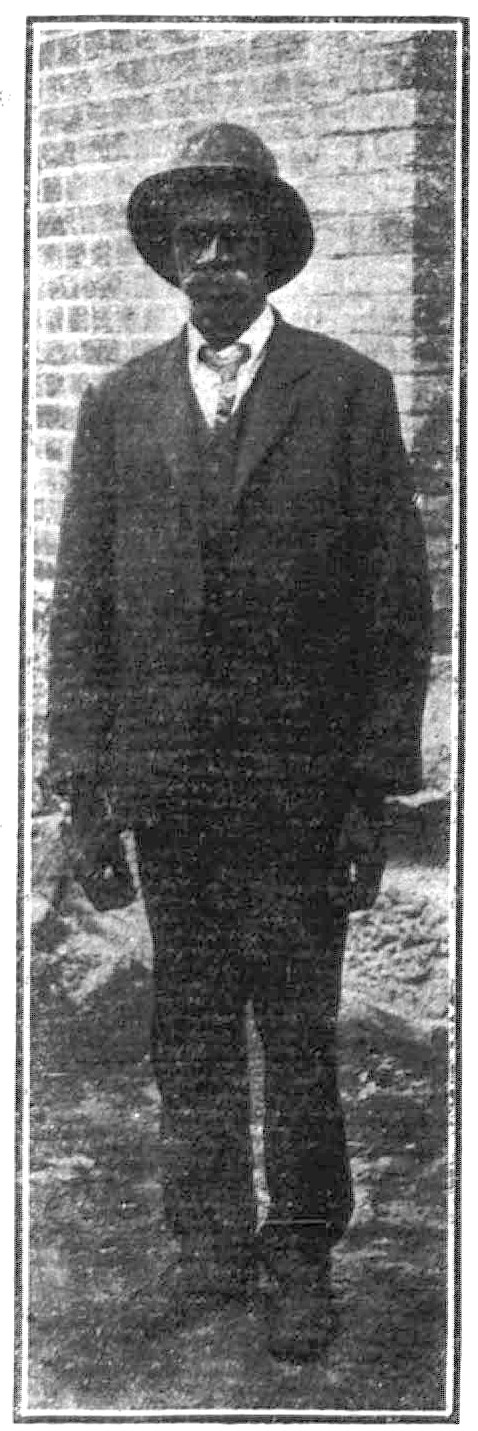
Tania Schafer - Librarian, State Library of Queensland
References
- Protrack 120m / 130yds Contenders information (by Smokey) on Sun Aug 22, 2010. Internet site http://protrack.forumotion.com/t83-120m-130yds-contenders (captured 22/10/18)
- Tom Petrie’s Reminiscences of Early Queensland (Brisb, 1904)
- 1906/ Annual Report of the Chief Protector of Aboriginals for 1905 - Queensland Parliamentary Papers; page 18 (Deportation)
- Blades, Australian Aborigines, Cricket and Pedestrianism: Culture and Conflict, 1880-1910 (B.A. Hons thesis, University of Queensland, 1985);
- Blades, Genevieve and Edwards, Ken (2005) Australian Dictionary of Biography, Supplementary Volume, Melbourne University Press, 2005, pp 350-351. http://adb.anu.edu.au/biography/samuels-charles-13183
- Tatz, C. (1995). Obstacle Race : Aborigines in Sport / Kensington, N.S.W : New South Wales University Press
- Tatz, C. (1987) Aborigines in Sports : The Australian Society For Sports History The ASSH Studies in Sport - Number 3 ; Published by The Australian Society For Sports History. Flinders University of South Australia, Bedford Park, South Australia, page 18. (Online book) http://library.la84.org/SportsLibrary/ASSHSSH/ASSHSSH03.pdf
- Cairns Post (Qld. : 1909 - 1954), Thursday 21 November 1912, page 8, SAMUELS PASSES OUT: AUSTRALIA’S GREAT ABORIGINAL SPRINTER. https://trove.nla.gov.au/newspaper/article/39914900
- Referee (Sydney, NSW : 1886 - 1939), Wednesday 21 June 1916, page 10 – The SAMUELS-HUTCHENS MATCHES. https://trove.nla.gov.au/newspaper/article/121177966
- Referee (Sydney, NSW : 1886 - 1939) Thu 10 Mar 1887 Page 7 ATHLETICS- THE CHAMPION OF THE WORLD. https://trove.nla.gov.au/newspaper/article/127598453
- Australian Town and Country Journal (Sydney, NSW : 1870 - 1907); Sat 5 Mar 1887Page 4 - HUTCHENS V. SAMUELS. https://trove.nla.gov.au/newspaper/article/71682442
- North Australian (Darwin, NT : 1883 - 1889) Sat 12 Feb 1887 Page 3 DOUBLE DEFEAT OF HUTCHENS. https://trove.nla.gov.au/newspaper/article/47996412
- Australian Town and Country Journal (Sydney, NSW : 1870 - 1907) Sat 22 Jan 1887 Page 40 SAMUELS v. HUTCHENS FOR £200. https://trove.nla.gov.au/newspaper/article/71680638
- The Sydney Morning Herald (NSW : 1842 - 1954) Tue 18 Jan 1887 Page 5 PEDESTRIANISM. https://trove.nla.gov.au/newspaper/article/28353458
- Freeman's Journal (Sydney, NSW : 1850 - 1932) Sat 22 Jan 1887 Page 19 SPORTING NEWS – THE RUNNING CHAMPIONSHIP OF THE WORLD – AN ABORIGINAL BLACK BEATS THE ENGLISH CHAMPION https://trove.nla.gov.au/newspaper/article/115449204
- Queensland Times, Ipswich Herald and General Advertiser (Qld. : 1861 - 1908) Sat 22 Jan 1887 Page 3 THE CHAMPIONSHIP FOOT-RACE. https://trove.nla.gov.au/newspaper/article/122820817
- Referee (Sydney, NSW : 1886 - 1939) Wed 30 Oct 1912 Page 14 SAMUELS PASSES OUT. https://trove.nla.gov.au/newspaper/article/122769785
- 6166 J. G. Appel photographs and papers 1900-1929 http://hdl.handle.net/10462/eadarc/6618
This material contains Aboriginal and/or Torres Strait Islander content, and has been made available in accordance with State Library of Queensland’s Aboriginal and Torres Strait Islander Collections Commitments.
Comments
Your email address will not be published.
We welcome relevant, respectful comments.